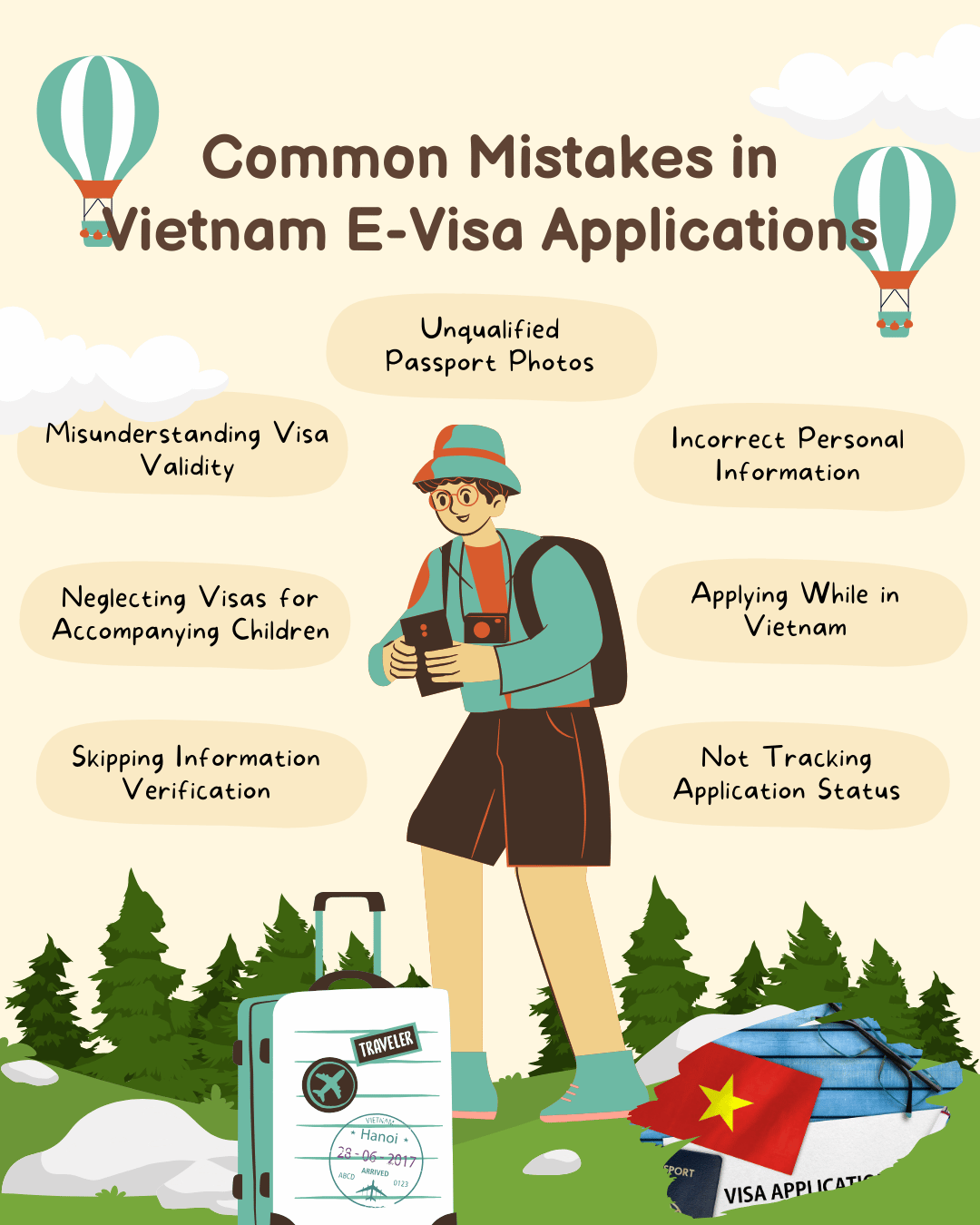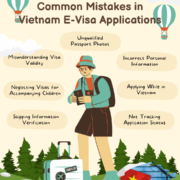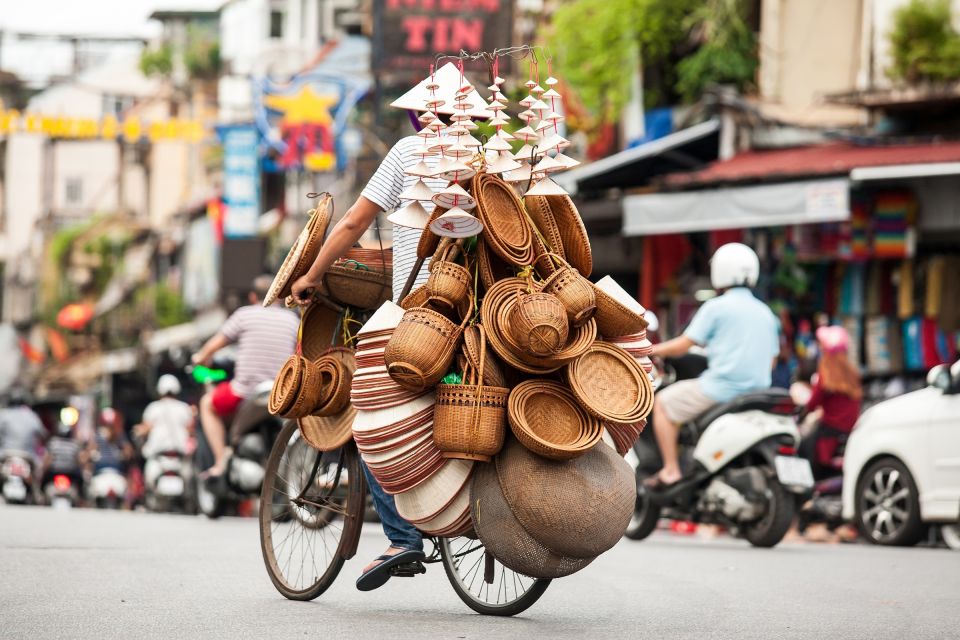
Common Mistakes in Vietnam E-Visa Applications
1. Inadequate Passport Photo
and Portrait
One of the most common reasons for
delays in the Vietnam e-visa application process is submitting unqualified
passport photos.
Before applying, ensure you have
both a passport photo and a recent portrait ready. These images should be
clear, sized under 2MB, and saved in either JPG or PNG format.
·
Portrait Requirements:
– Recent (taken within the last 6 months)
– High quality with a plain background
– No glasses and no tank tops
– Face the camera directly
– You cannot crop an image from your passport; such images
will be rejected.
·
Passport Bio Page Photo:
– Must be a high-quality image showing the full page,
including all ICAO lines.
When uploading photos in the
application form, make sure to place the portrait in the first field and the
passport bio page photo in the second field. Submitting both portraits or
passport photos incorrectly can lead to changes in the submitted images and
extend the approval process.
2. Providing Incorrect Personal
Information
One of the most frequent mistakes
applicants make when applying for a Vietnam e-Visa is entering incorrect
personal details. Common Mistakes Include:
·
Names: The instructions for completing
the e-Visa application on the Vietnam Immigration portal can be confusing and
open to interpretation. It’s crucial that the spelling and spacing of your full
name exactly match the ICAO line on your passport. Ensure you provide your
complete name, as many applicants tend to leave it incomplete, leading to
delays in processing. Even if your e-Visa application is approved,
discrepancies can result in being denied boarding for flights or entry at the
border.
·
Date of Birth: Always use the correct
format of DD/MM/YYYY, as opposed to the mm/dd/yyyy format that is common in
some regions.
·
Passport Number: Make sure to include the
entire passport number exactly as it appears in your passport.
·
Passport Expiry Date: This must be
entered in its precise form without any errors.
Remember, all passport details
must be entered accurately, letter by letter and number by number, to ensure
smooth entry into Vietnam.
3. Misunderstanding Visa
Validity
A common misconception regarding
the Vietnam e-Visa is that its validity begins on the date of arrival. Many
travelers mistakenly plan their trips close to the visa’s expiry, which can
limit their stay and may necessitate a visa extension for additional time in
the country.
In reality, the e-Visa becomes
active on the arrival date specified in your application. While you cannot
enter Vietnam before this date, you also shouldn’t delay your entry for too
long. If you wait too long, the 30-day validity period may expire without your
arrival. Therefore, it’s essential to have a clear travel plan and flight
schedule to ensure you make the most of your time in Vietnam.
4. Applying While in Vietnam
It’s important to note that the
e-Visa must be applied for while you are outside of Vietnam. Many travelers
mistakenly submit their e-Visa applications while already in the country,
hoping to perform a same-day visa run to extend their stay. Such applications
will be automatically denied.
5. Failing to Apply for Visas
for Accompanying Children
When applying for an e-Visa, be
aware of the section labeled: “Under 14 years old accompanying child(ren)
included in your passport (if any).” This option is only applicable if your
children’s names are listed in your passport. If your children have their own
passports, they will need separate visas, just like adults.
Some parents mistakenly add their
children’s names to the same visa application, assuming it will cover them as
well. Consequently, the visa may be issued listing the children on the parent’s
visa, even though they don’t appear in the parent’s passport. This means that
the children will not have valid visas and will not be allowed to board the
plane.
6. Online Status Tracking
Applicants often assume that the
results of their e-Visa application will be automatically sent to their email,
given the online nature of the process. However, many may not be aware of the
status check function available on the Vietnam Immigration Department’s
website.
After three working days, it’s
essential to visit the website directly to manually check the status of your
application. You can track the outcome using your registration code, email, and
date of birth. Please note that due to the high volume of applications
processed daily, no email notifications regarding issued e-Visas will be sent
to applicants.
7. Failing to Double-Check
Information on the e-Visa
Mistakes can occur during the
e-Visa application process, leading to incorrect information. However, if you
notice discrepancies when downloading your e-Visa, you still have the
opportunity to apply for a new one and adjust your travel plans accordingly.
This proactive approach will be more cost-effective than facing denial at the
airport on departure day and will minimize potential complications.
While it’s rare, errors can
sometimes originate from the Vietnam Immigration Department. Therefore, it’s
essential to verify all details upon receiving your e-Visa. If you spot any
inaccuracies, promptly contact the Department to address the issue before your
travel.
Recent Posts
Common Mistakes in Vietnam E-Visa Applications
Discover the Hidden Gems of Northern Vietnam: Mai Chau and Pu Luong
Tam Coc – Trang An – Galaxy Cave – Van Long

Phong Nha National Park





